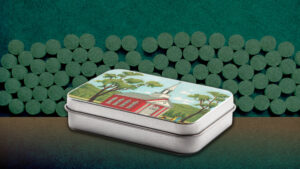I’ve got a problem with authenticity.
I know this sounds bad, like saying, “I hate kittens.” Or sunshine. Or happiness. After all, authenticity is such a lovely, fluffy, catch-all term. Everyone wants it, and everyone loves it. What’s not to like?
Consider these memes on authenticity:
By choosing to be our most authentic and loving self, we leave a trail of magic wherever we go.
There is nothing more beautiful than your authentic self.
People who are true to their authentic selves have found the secret to ultimate happiness.
Like I say, lovely.
But what does authenticity actually mean?
Real Authenticity
Our culture says authenticity is “being true to yourself.” That’s fine if your true self is a beautiful fairy princess. But what if she’s a warty toad? What if (like me) she’s authentically horrid?
Should I be true to the self who has low blood sugar and feels like she’s a piece of rubbish? The self who wants to punch the driver who cut her off on the freeway? The self who wants another cocktail and doesn’t care about the consequences? The self who says, “Forget everything, except what makes me feel good”?
The self who doesn’t do repentance, discomfort, or a crucified God?
Sure, I can be true to this self. But it won’t leave a trail of magic.
Even the world gets this point. Here’s what the world really says:
Be yourself—as long as that self isn’t stressed or anxious or frightened or tired.
Be real—but only if it’s filtered.
Be beautiful—but only in these prescribed ways.
Be on a journey—but don’t misstep, and make sure you’re headed where everyone else is going.
It seems that no matter how much the world celebrates authenticity, it doesn’t know how to find the real thing. Often the more authentic people appear, the less authentic they are. Think of the Instagrammer who spends forever on her “no makeup” selfie, the guy who bares his soul as a pick-up technique, or the marketer who sells shabby chic as a brand.
Authentic Sinner
There’s something good in our desire for “authenticity.” We’re tired of masks, and we want to get real. But what if “authenticity” has become just another mask—one more covering for our sins? While the world tells me to seek its validation for my authentic self, the gospel tells me to seek Jesus’s forgiveness for my inexcusable sins. There’s a big difference.
While the world tells me to seek its validation for my authentic self, the gospel tells me to seek Jesus’s forgiveness for my inexcusable sins.
But when we grasp that difference, something wonderful opens up: the chance to drop the act. With Jesus I can stop pretending to be good; I can even stop pretending to be “authentic.” I’m known and loved by someone who doesn’t wink at my sins or consider them “the grit that makes the pearl.” I’m loved in spite of what I’m like, and in the power of that grace I can move out into the world.
Nothing to prove, nothing to hide, nothing to lose. Ransomed, healed, restored, and forgiven—that’s far better than “authentic.”
Editors’ note: A version of this article appeared at A New Name.
Download your free Christmas playlist by TGC editor Brett McCracken!
 It’s that time of year, when the world falls in love—with Christmas music! If you’re ready to immerse yourself in the sounds of the season, we’ve got a brand-new playlist for you. The Gospel Coalition’s free 2025 Christmas playlist is full of joyful, festive, and nostalgic songs to help you celebrate the sweetness of this sacred season.
It’s that time of year, when the world falls in love—with Christmas music! If you’re ready to immerse yourself in the sounds of the season, we’ve got a brand-new playlist for you. The Gospel Coalition’s free 2025 Christmas playlist is full of joyful, festive, and nostalgic songs to help you celebrate the sweetness of this sacred season.
The 75 songs on this playlist are all recordings from at least 20 years ago—most of them from further back in the 1950s and 1960s. Each song has been thoughtfully selected by TGC Arts & Culture Editor Brett McCracken to cultivate a fun but meaningful mix of vintage Christmas vibes.
To start listening to this free resource, simply click below to receive your link to the private playlist on Spotify or Apple Music.


































